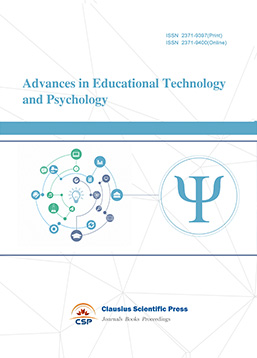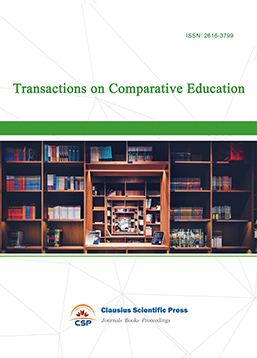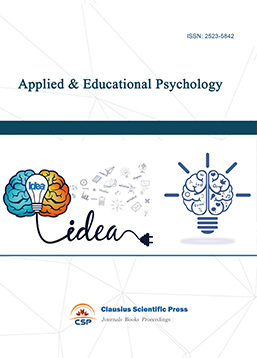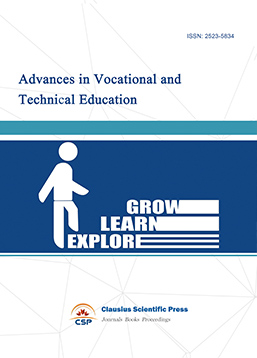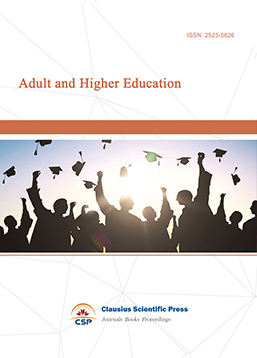Layered Progressive Teaching Model: An Empirical Study on Engineering Fluid Mechanics Course
DOI: 10.23977/curtm.2024.070923 | Downloads: 15 | Views: 622
Author(s)
Juan Fu 1, Zhenhuan Ye 1, Ming Lv 2
Affiliation(s)
1 School of Engineering, Zunyi Normal University, Zunyi, 563006, China
2 School of Mechanical, Electronic and Control Engineering, Beijing Jiaotong University, Beijing, 100044, China
Corresponding Author
Juan FuABSTRACT
Engineering fluid mechanics is a challenging foundational course due to its high cognitive demands. This study introduces the "Layered Progressive Teaching Model" (LPTM), integrating Bloom's Taxonomy with Cognitive Load Theory. The model establishes a comprehensive framework through three key mechanisms: cognitive objective layering, progressive teaching activities, and collaborative feedback and evaluation. A quasi-experimental design at an undergraduate institution compared an experimental group (N=51) with a control group (N=69). Results showed that the experimental group significantly outperformed the control group in homework, final exam scores, and overall performance, with effect sizes of 1.64, 1.72, and 2.09, respectively. These findings demonstrate the model's effectiveness in improving student learning outcomes and provide insights for teaching reforms in complex engineering courses.
KEYWORDS
Layered Progressive Teaching Model, Cognitive Objective Taxonomy, Cognitive Load Optimization, Engineering Fluid Mechanics, Empirical StudyCITE THIS PAPER
Juan Fu, Zhenhuan Ye, Ming Lv, Layered Progressive Teaching Model: An Empirical Study on Engineering Fluid Mechanics Course. Curriculum and Teaching Methodology (2024) Vol. 7: 152-159. DOI: http://dx.doi.org/10.23977/curtm.2024.070923.
REFERENCES
[1] Felder, R. M., & Brent, R. (2016). Teaching and learning STEM: A practical guide. John Wiley & Sons.
[2] Kumar, S., & Hsiao, J. K. (2007). Engineers learn "soft skills the hard way": Planting a seed of leadership in engineering classes. Leadership and Management in Engineering, 7(1), 18-23.
[3] Sweller, J., van Merriënboer, J. J., & Paas, F. (2019). Cognitive architecture and instructional design: 20 years later. Educational Psychology Review, 31(2), 261-292.
[4] Borrego, M., & Henderson, C. (2014). Increasing the use of evidence‐based teaching in STEM higher education: A comparison of eight change strategies. Journal of Engineering Education, 103(2), 220-252.
[5] Graham, R. (2018). The global state of the art in engineering education. MIT School of Engineering.
[6] Anderson, L. W., Krathwohl, D. R., & Bloom, B. S. (2001). A taxonomy for learning, teaching, and assessing: A revision of Bloom's taxonomy of educational objectives. Longman.
[7] Krathwohl, D. R. (2002). A revision of Bloom's taxonomy: An overview. Theory into practice, 41(4), 212-218.
[8] Freeman, S., Eddy, S. L., McDonough, M., Smith, M. K., Okoroafor, N., Jordt, H., & Wenderoth, M. P. (2014). Active learning increases student performance in science, engineering, and mathematics. PNAS, 111(23), 8410-8415.
[9] Brown, P. R., McCord, R. E., Matusovich, H. M., & Kajfez, R. L. (2015). The use of motivation theory in engineering education research: a systematic review of literature. European Journal of Engineering Education, 40(2), 186-205.
[10] Sweller, J. (2020). Cognitive load theory and educational technology. Educational Technology Research and Development, 68(1), 1-16.
[11] Clark, R. C., & Mayer, R. E. (2016). E-learning and the science of instruction: Proven guidelines for consumers and designers of multimedia learning. John Wiley & Sons.
[12] Streveler, R. A., Litzinger, T. A., Miller, R. L., & Steif, P. S. (2008). Learning conceptual knowledge in the engineering sciences: Overview and future research directions. Journal of Engineering Education, 97(3), 279-294.
[13] Borrego, M., Douglas, E. P., & Amelink, C. T. (2009). Quantitative, qualitative, and mixed research methods in engineering education. Journal of Engineering Education, 98(1), 53-66.
[14] Crowe, A., Dirks, C., & Wenderoth, M. P. (2008). Biology in bloom: implementing Bloom's taxonomy to enhance student learning in biology. CBE—Life Sciences Education, 7(4), 368-381.
[15] Mayer, R. E. (2021). Multimedia learning (3rd ed.). Cambridge University Press.
| Downloads: | 38448 |
|---|---|
| Visits: | 1667742 |

 Download as PDF
Download as PDF